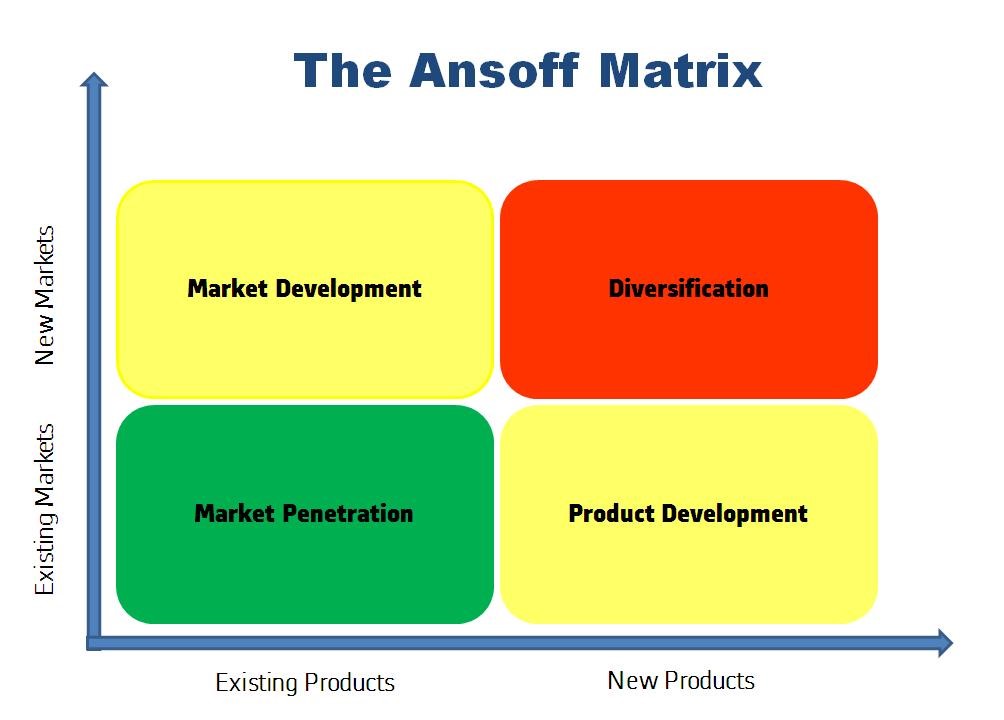Does crafting an effective B2B GTM strategy feel like swimming against the tides? Your sales team has given you different ideas, but let’s face it, good ideas alone are not enough to increase your sales. You need a full-proof B2B GTM Outperformers strategy.
Yet, again, there are hundreds of B2B GTM strategies to choose from; designing the best for your business can involve many trials and errors.
Who on this earth has time for so many trials and errors? Thinking of letting all your weapons down? Not so early!
A McKinsey study shows how top-performing B2B tech and telecom companies leverage different strategies to drive significant market share gains, even amidst economic uncertainty.
So, we have some of the techniques used by the B2B GTM outperformers to increase your sales.
Without wasting much time, let’s get in.
What is a B2B Go-to-Market Strategy?

A B2B Go-to-market strategy is a strategy that you should create to find an ideal market to sell your products, get new clients from this market, and take steps to maintain the existing ones.
This strategy involves:
- Identifying Target Accounts
- Sales and Marketing Programs
- Market Positioning
- Key Performance Indicators
This strategy works for both a new product launch and an ongoing plan. If you apply this strategy, you can benefit your business in several ways:
- Aligning all areas of your business to work together
- Removing barriers between teams
- Coordinating sales and marketing efforts
- Cutting down on advertising expenses
- Ensuring customers have a smooth and enjoyable buying experience.
How Dropbox Nailed This Strategy and Increased Its Sales?
Who doesn’t know about Dropbox? You might also be presently using it to store and share files online. It’s presently a leader in B2B business and has more than 700 million registered users across 180 countries.
But do you know the reason behind this massive success? Yes, it’s their Go-to-market strategy.
At first, Dropbox used a “freemium” strategy. They let you use the basic service for free, hoping you would see the value and upgrade to a paid plan. This, along with clever marketing that spread through word-of-mouth, helped Dropbox quickly attract many users.
But Dropbox also made some strategic changes to cover its target market:
- Focus on specific industries and create personalized messages and solutions for them.
- Partnered with tech giants like Google and Microsoft to sell its product.
- For big companies who need more of security and compliance, Dropbox catered to their needs by making specialized plans for them.
How do these changes help Dropbox?
- Revenue Increased
Its revenue spiked, and more people started paying for its plan.
- Brand Recognition and Reputation
The smart move of collaborating with big companies made it more popular, and people started trusting it more as a top cloud service storage provider.
- Market Penetration
Large companies that always need space to store their huge amount of data opted for Dropbox to meet their needs.
This is just one example: “If Dropbox can do it, you can too.” Let’s take a look at what some of the top performers do to maximize their sales.
Did you know?
Using the “Freemium” strategy, Dropbox grew into a business with 200 million users.
How do Top B2B GTM Outperformers Enhance their Sales?
The pandemic of COVID-19 pushed us all into a virtual deep end. Everything from catching up on work meetings to exercise sessions to chats with friends and family was now done online.
Sales was no exception. If you believe your business can flourish in today’s market by following the old traditional sales method you’re using, then you’re setting yourself up for failure.
The businesses who understood this and tweaked their techniques are writing the pages for success.
Let’s learn from them what you should do to optimize your sales tactics.
1. Investing in Your Sales Team

“Change starts from within, and it’s the catalyst to your outward transformation.”
The sales team is the champion for improving sales. Their efforts and knowledge can have a positive or negative impact on sales.
With deep knowledge, confidence, and skill, they become unstoppable in selling your product or service. It’s that simple. So, why not invest in them?
- Sales Training
Don’t you think that if you give them regular sales training to improve their sales skills, they can turn every customer interaction into a potential win?
- Intense Training
Don’t you think if you give them comprehensive training focusing on advanced sales techniques, product expertise, and customer service excellence, they can increase their sales performance and also focus on customer satisfaction?
- Continuous Learning
Don’t you think that if you pair a naive person with a seasoned sales professional and encourage an environment of continuous learning from experts, you can motivate the new salespeople to perform better?
- Incentive Program
Don’t you think your salespeople would perform much better if they get the incentives for not just completing but exceeding their targets?
We both know that the answer to the above questions is “Yes.” Then what are you waiting for? Start taking the steps now.
Remember, your success is intertwined with the success of your sales team. Hence, you should put effort into keeping them engaged, motivated, and skilled.
Challenges You Might Face
- High Costs and Resources
Training and development programs can be expensive and time-consuming.
- Resistance to Change
Sales team members may resist new training programs or methods.
- Retention of Trained Staff
Risk of losing trained employees to competitors.
Solutions:
- Focus on high-ROI training
- Communicate benefits clearly, involve the sales team in decisions, and provide incentives.
- Foster a positive work environment with career advancement, continuous development, and recognition.
Did You know?
According to a survey, engaged employees can increase sales by 18% and the profitability of the business by 23%
2. B2B GTM Outperformers Leverage Advanced Sales Tools

If you are running a B2B business, you might know the struggle to continuously innovate and use new sales techniques and advanced tools to stay ahead of the competition.
You need to give training to your sales team to adapt to new advanced sales tools. By using these tools, your sales team can:
- Identify promising prospects
- Determine the best times to engage with them
- Understand what topics will resonate most
Also, in this digital world, the sales team emphasizes their preference for accessing advanced tools to simplify their tasks. Companies sticking with outdated sales methods risk losing sales and their top sales talent.
Utilizing sales tools just doesn’t mean that you should google “Which sales tool is better?” and add the software that pops up. Instead, have your IT team collaborate with sales to determine what they actually need to perform better.
We have a list of six important sales tools to help you convert your potential clients into paying customers.
- CRM
- Sales Prospecting Tools
- Sales Engagement Tools
- Sales Management Tools
- Sales Forecasting Tools
- Sales Enablement Tools
Sales tools help your team finish tasks faster and more efficiently, allowing them to spend less time on admin work and more on selling.
Challenges You Might Face in Adoption
- High Initial Investment
Advanced tools and software can be costly to implement.
- Integration With Existing Systems
Difficulty in integrating new sales tools to the existing ones
- Training and Adoption
Time and effort required to train on new tools. Also, ensuing consistent use and adoption across the sales team.
Solutions:
- Start with a trial program that would help you to explore financing options and vendor discounts.
- Choose tools with strong integration capabilities. Hire IT experts and work closely with them.
- Provide comprehensive training for using the new tools.
- Use a step-by-step onboarding process, and encourage use through follow-ups and support.
Did you know?
Based on LinkedIn’s State of Sales 2021, 94 percent of sales professionals believe that sales tools help them close more deals.
Thus, start your research today about the advanced sales tools you need for your business and give them to your sales team to reap the benefits.
3. Omnichannel Marketing

Want to grow your business and stand out from the crowd? Having a website and online presence won’t cut it. You need Omnichannel marketing.
Omnichannel marketing means creating a smooth customer shopping experience across all channels online, in stores, and on mobile devices. It’s about making sure that whether someone shops on a website, visits a store, or uses an app, they get a consistent and unified experience.
This approach aims to make shopping easier and more convenient for customers. By using this, you can consider the ideal channels your customers use for shopping and approach them on those channels.
With people being bombarded with online posts, emails and mobile app notifications on top of the traditional ads they see on TV, marketing touchpoints aren’t just limited to one or two. Hence, poking people now and then is necessary to remind them about your product.
Omnichannel marketing helps you achieve this. It works like having many product displays in a store. Wherever customers look, they see your brand and what it offers.
When done right, omnichannel marketing can reach more people who are ready to buy, boosting your sales opportunities.
Challenges You Might Face While Implying Omnichannel Marketing
- Consistency Across Channels
- Maintaining a consistent brand message across multiple channels.
- Coordinating marketing efforts across various platforms.
- Data Management
- Integrating and analyzing data from different channels.
- Managing customer data privacy and compliance issues.
- Resource Allocation
- Allocating sufficient resources to manage multiple channels.
- Ensuring all channels receive adequate attention and support.
Solutions
- Develop unified brand guidelines, use integrated marketing platforms, and regularly review strategies.
- Invest in robust tools, ensure data privacy compliance, and train staff on data handling best practices.
- Prioritize high-ROI channels, automate routine tasks, and consider outsourcing to specialized agencies.
Did you know?
There is a 287% higher purchase rate with omnichannel campaigns versus single-channel campaigns.
4. Forgetting One-Size-Fits All Approach (B2B GTM Outperformers Move to Hyper-Personalization)

Switching to hyper-personalization means leaving behind that generic approach to target broader segments by using account-based marketing.
In Hyper-personalization, you need to design your marketing efforts and messages precisely to the individual preferences and behaviors of each specific customer.
It involves:
- Using detailed data and insights to deliver highly personalized experiences
- Content and offers that resonate deeply with each customer on a personal level
- Aiming to enhance engagement and drive conversions more effectively.
Follow the below steps to change your gears to hyper-personalization:
- Sending personalized emails to your customers.
- Creating ads that target the pain points of your customers
- Suggesting products or services to the people based on what they are looking for on your website.
- Offering special prices or deals to different groups of customers or based on what they buy.
- Making sure each customer gets help in a way that fits them best.
- Reading the minds of people by studying their browsing habits and suggesting them on the basis of that.
If you follow, people feel that you are actually talking to them and are more likely to make a purchase.
Challenges You Might Face While Making this Shift
- Consistency Across Channels
- Maintaining a consistent brand message across multiple channels.
- Coordinating marketing efforts across various platforms.
- Data Management
- Integrating and analyzing data from different channels.
- Managing customer data privacy and compliance issues.
- Resource Allocation
- Allocating sufficient resources to manage multiple channels.
- Ensuring all channels receive adequate attention and support.
Solutions:
- Utilize advanced analytics tools, partner with data analytics experts, and focus on gathering relevant and actionable data.
- Implement scalable personalization technologies with AI and machine learning for automated personalized content.
- Invest in the latest personalization tools that integrate well with existing systems, and stay updated with technological advancements to maintain competitiveness.
Did you know?
Expectations are now high! A study shows that 71% of consumers expect personalized interactions from companies.
5. Implementing a Business-Owned E-Commerce Platform

For increasing your sales you need your own marketplace to sell your products. This trend is growing rapidly, with more companies either having already set up these marketplaces or planning to do so soon.
But, why are the B2B GTM outperformers doing so? The answer is simple. By creating your marketplace to sell your products, you have more control on:
- How are your products sold, and
- Direct engagement with your customers
Benefits of this approach:
- Better Customer Experience
- Personalized shopping experience
- Direct interaction with your customers
- Streamlined services
- Loyalty programs
- More Sales
- Broader product range
- Cross-selling and upselling
- Easy product promotions
- Stronger Market Position
- Brand control
- Competitive advantage
- Market reach
- Adaptability and innovation
Companies that invest in their own marketplaces often see better performance and customer engagement.
Challenges You Might Face in the Implementation Process
- High Initial Costs
- Significant investment is required to build and maintain a marketplace.
- Ongoing operational and marketing costs.
- Attracting Traffic and Customers
- Competing with established marketplaces for customer attention.
- Developing effective marketing strategies to drive traffic.
- Technical and Logistical Issues
- Managing technical aspects of marketplace development.
- Handling logistics, payments, and customer service efficiently.
Solutions:
- Create a detailed budget, seek investors, and explore cost-saving opportunities.
- Implement SEO, digital marketing, and promotions to drive traffic.
- Hire experienced developers, use reliable technology, and optimize operations.
6. Expanding Your Horizons

As online competition gears up, utilizing third-party marketplaces can be a smart and low-risk way for businesses to grow.
Online marketplaces like Amazon, Jet, and Walmart might seem like competitors at first. But they are the friends you didn’t know you needed. And these friends can play a very important role in growing your business.
In fact, you can increase your sales by actually doubling down on your unique value propositions. Third-party marketplace allows you to draw in new customers and better meet the needs of existing ones.
Scratching your head? An example here may help.
If you list your product on Amazon. It promotes the product through:
- Sponsored ads,
- Highlighting it in category searches and
- Featuring it in email newsletters,
Thus, it increases sales through targeted marketing efforts.
This approach offers ample amount of benefits like:
- Access to a Larger Audience
Amazon, eBay, and Etsy draw millions of people searching for products. When you list your product there, you gain access to a larger audience base. This isn’t possible through your website or physical store alone.
- Enhanced Credibility and Trust
Partnering with a trusted marketplace means teaming up with a well-known platform where people feel safe to shop. Being in a trusted marketplace can reassure them that their purchase is secure and reliable.
- Optimized Marketing and Advertising
Third-party marketplaces often invest heavily in marketing and advertising to drive traffic to their platform. By listing your products, you can benefit from their marketing efforts, including:
- Targeted ads,
- Promotions, and
- Featured placements. This can increase visibility and drive sales.
- Data and Analytics
When you list your product on third-party they provide you with data and analytics tools to track sales trends, customer behavior, and performance metrics. This data can be used to:
- Optimize pricing strategies,
- Product offerings, and
- Marketing campaigns to better meet customer demands and maximize sales.
Still, thinking you can do it all by yourself? Sure, you can DIY just about anything. But accept that some things are better left to the experts. This is what B2B GTM outperformers do: skyrocket their sales and increase revenue generation.
Challenges That You Might Face While Using Third-Party Marketplace
- Competition and Visibility
- Standing out among numerous competitors on large marketplaces.
- Ensuring product listings are optimized for visibility and sales.
- Fees and Margins
- Managing costs associated with marketplace fees and commissions.
- Maintaining profitable margins while using third-party platforms.
- Brand Control
- Maintaining control over brand presentation and customer experience.
- Dealing with potential negative reviews or feedback on the marketplace.
Solutions:
- Optimize listings, use advertising options, and showcase positive reviews.
- Factor in all fees, seek cost reductions and consider higher-margin products.
- Maintain a strong brand identity, respond to feedback, and use consistent branding.
Did you know?
Amazon gets 2.4 billion monthly visits in the US alone, and it has more than 350 million products available across the entire platform. According to Statista, Amazon made up 37.6% of US online shopping spending in 2023, and this is expected to increase by another 11.7% in 2024.
7. Maintaining Customer Relationships

To make a sale, customers need to trust the salesperson. This goes beyond being polite and returning calls; it’s taking care of their needs and building a real connection.
Once trust is there, customers believe the products offered can solve their problems.
Improving relationships with customers helps salespeople close more deals- a basic rule most sales professionals know instinctively.
People rely less on salespeople because they see them as focused more on selling products rather than solving problems. Customers want people who understand and address their needs and offer a real solution.
Nobody likes people who are just pushing to purchase their products. Successful trust-building lets salespeople continue reaching out to customers.
Instead of ignoring a cold call, people might appreciate reaching out to them and be more likely to listen to what a salesperson has to say. They could see it as helpful rather than intrusive, making them more open to hearing about what they offer.
Remember, “Happy customers are your biggest advocates and can become your msot successful sales team.”
Challenges You Might Face
- Time and Resources
- Allocating sufficient time and resources to nurture relationships.
- Balancing relationship-building with new customer acquisition.
- Consistency and Personalization
- Providing consistent and personalized communication.
- Ensuring each customer feels valued and understood.
- Managing Expectations
- Meeting customer expectations and handling complaints effectively.
- Keeping up with changing customer needs and preferences.
Solutions:
- Use CRM tools, prioritize high-value customers, and automate routine interactions.
- Develop personalized communication, update customer profiles, and use automated systems.
- Set clear expectations, act on feedback, and address issues promptly.
Did you know?
81% of companies see customer experience as something that sets them apart from their competitors.
Now It’s Your Turn to Join B2B GTM Outperformers
We all know that change is hard. But, with careful planning and execution, you can run a successful B2B go-to-market campaign that boosts your sales.
Pro-tip: Your B2B GTM strategy isn’t one-size-fits-all; it evolves with your business and market dynamics.
Are you interested in discovering more about your B2B go-to-market strategy?



